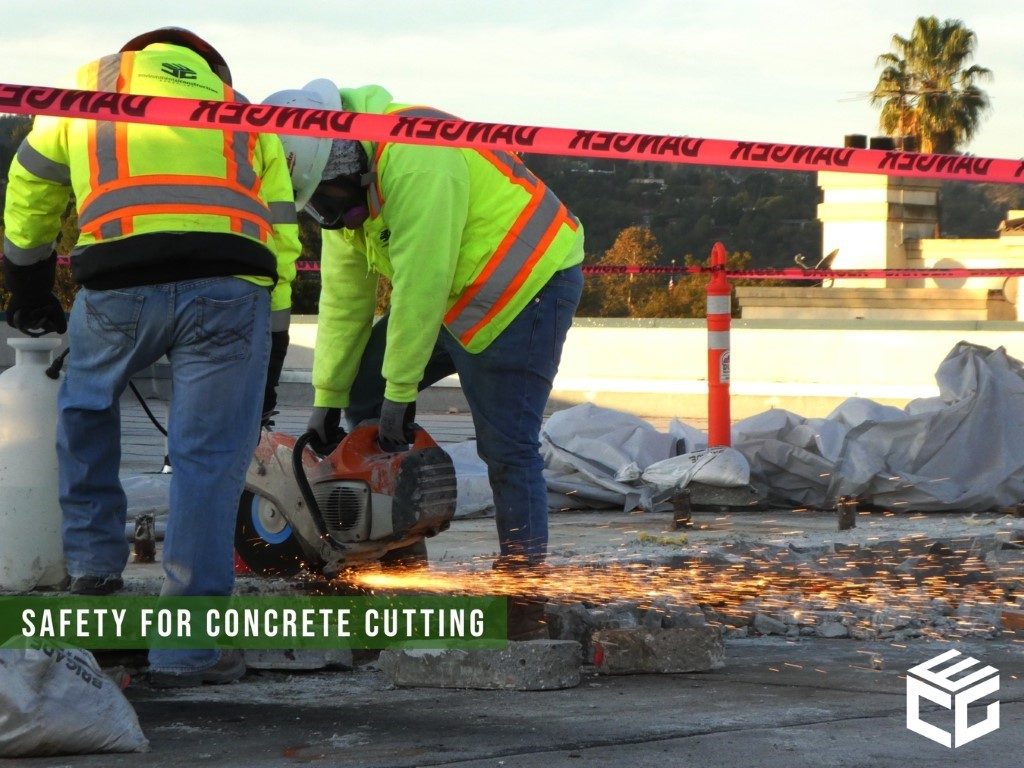Safety For Concrete Cutting
All construction jobs come with their own unique risks. Concrete cutting is not different, A concrete saw cutting can be tricky, not to mention dangerous. It is therefore of vital importance that you know what you’re doing when sawing concrete. If you don’t, it’s better to let professionals handle the job.
Fortunately, concrete cutting in California can be carried out safely and efficiently, thanks to the existence of the many Demolition in California companies that exist. If you are interested in a project that requires concrete cutting, you should reach out to Environmental Construction Group!
There are some safety measures that you should know before starting with said project. The most obvious potential for injuries is having part of a worker’s body come into contact with a moving saw blade or core drill. But there are other significant hazards that workers don’t always think about.
One of the biggest is the presence of electrical lines or other utilities inside the concrete. Even when architectural drawings exist, they may not be completely accurate when it comes to pinpointing the location of hidden conduits, electrical lines, and junction boxes. That’s a particular hazard when you are core drilling, because you typically wet-cut to limit the exposure to silica dust. If your drill comes into contact with a live electrical line or equipment like a switch, there’s a hazard for electrocution and fire. At the very least, you can inadvertently knock out power to a large portion of a building.
We’ve put these handy tips together to help you know part of the process. Consider the below for your safety and the quality of the job.
Working Safely on Site
Those people responsible for workplace safety and health must ensure that the work site is safe, based on the results of the workplace health and safety risk management process, as recorded in the Job Hazard Analysis (JHA) or similar site evaluation. Site preparation for concrete cutting and drilling operations should include consideration of:
- Weather/environmental conditions that can create hazards (e.g. heat, rain).
- Access to and from the work site.
- Barricades and warning signs.
- Provisions for appropriate personal protective equipment. q Specific health and safety instructions for the site.
- Whether the equipment is suitable for the work, is properly maintained and will be used according to manufacturer’s recommendations.
- Provision for GFCI residual current devices for electrical equipment. q Safe removal of cut pieces and cores.
- A method to collect residue to prevent the surface becoming slippery and to prevent residue entering stormwater drains. Residue should be disposed of according to environmental protection requirements.
Using Cutting Equipment Safely
Before cutting with road, floor, wall, and handheld saws, the operator should check that the equipment is safe. The general condition of the equipment should be checked by the operator before commencing each job to ensure that the cutting tool, guards, leads, and hydraulic hoses are in good order.
We are ECG, We are safety first.
This field definitely needs some expert hands and skills. Have you decided on what type of project you need? We pride ourselves in providing Demolition, abatement and Environmental Services you can depend on.
Contact us to get started on your next project, Call us: 562-438-7999.





